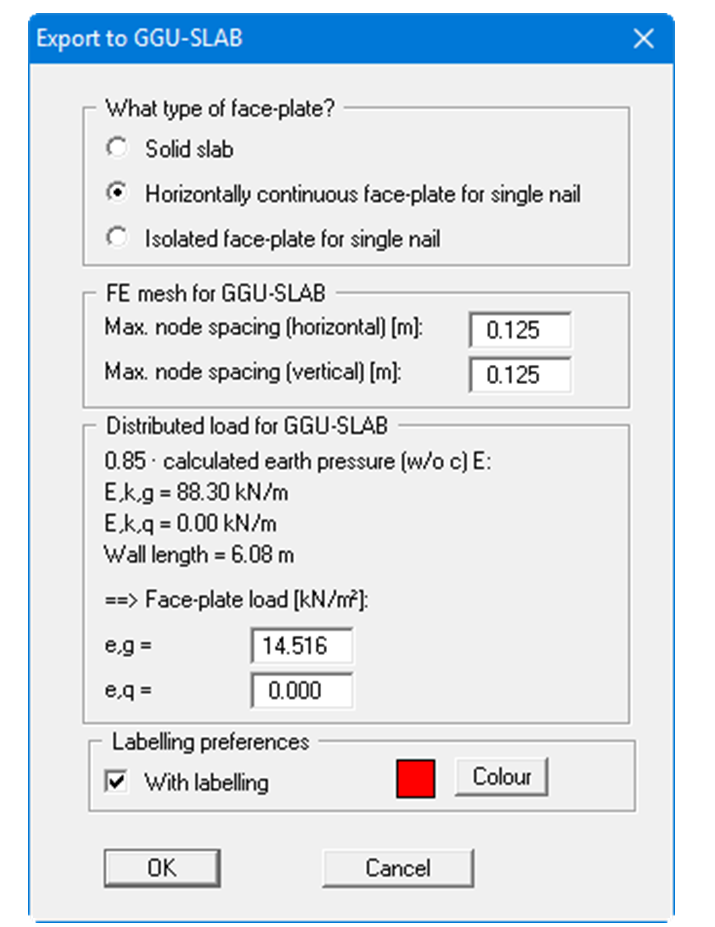GGU-STABILITY: Verification of the concrete shell
The menu item "Nail wall/Export to GGU-SLAB" is available for bending design of the concrete shell. A dataset is exported which can be read by the GGU-SLAB program. However, only systems with 1 slope face can be exported. The GGU-SLAB program allows analysis and design of slabs using finite-element methods. In principle, there are three different methods of manufacture, and thus analysis, for concrete shells for nail walls.
Solid slab
The concrete shell is continuously reinforced and acts horizontally and vertically as a continuously solid slab. Bending moments arise between the tension members in vertical and horizontal directions and are accepted by the reinforcement.Horizontally continuous face-plate for single nail
The concrete shell is manufactured horizontally continuous only. In the centre line between two vertical nails a gap is created in which no bending moments can be transmitted.Isolated face-plate for single nail
The concrete shell is only reinforced in a rectangular area around the nail. In the centre line between two vertical or two horizontal nails a gap is created in which no bending moments can be transmitted. A face-plate is created for each nail, which acts as an individual structural unit.
Which of the three listed structural systems is exported to the GGU-SLAB program can be specified in the upper group box of the following dialog box.

The constant distributed load on the slab is generally given by the earth pressure, reduced by 15%, calculated without any cohesion components in accordance with current permits and which is divided by the length of the concrete shell. This value is given at the bottom of the dialog box and can be edited. In some publications the reduction of this value by the factor 0.85 is not mentioned. Other publications divide the maximum possible nail force by the area influenced by the nail and use this distributed load for calculations, i.e.
Distributed load = maximum nail force/(horizontal nail spacing · vertical nail spacing)
The final approach generally provides the largest moments and thus the strongest reinforcement. If you need to consider such cases, you must adjust the distributed load in the above dialog box accordingly.
